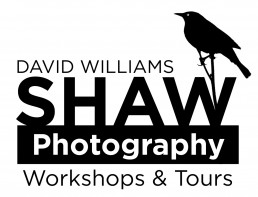Challenges of Backlight
The previous two editions on this topic (harsh light and flat light), were straightforward. But this one is a bit trickier. Backlight is only “bad” if you have certain expectations for your image. Here is a quick anecdote:
This September, I was leading my “Fat Bears of Katmai” trip. We arrived at Brooks Falls to find bright, backlit conditions on the bears. This is typical of autumn mornings (later in the day the sun rolls around to shed sweet, afternoon light on the falls). One of my clients commented about how bad the light was, and I was a bit surprised, I’d been thinking of it as an opportunity to create something different from my previous images at Brooks.
Now, in my client’s defense, it was their first time there, and we certainly all have hopes and goals during a visit to Brooks: we want that perfect light on the bears fishing. I, however, have been there MANY times and have frankly gotten a bit bored with the classic shots. The backlight conditions we’d just encountered struck me as an opportunity.
Anyway, my client and I talked for a few minutes about how to work with backlight, and the kinds of images you can make in these conditions that are otherwise impossible. Soon we were all happily snapping away, creating interesting images of backlit bears, with water drops and splashes erupting around them.
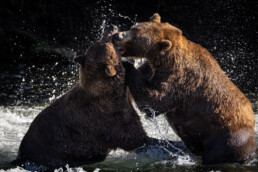
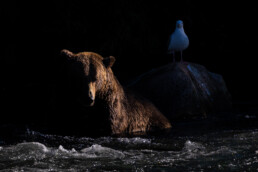
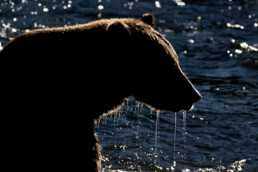
Shooting in the backlight is a craft and an art. Nailing the exposure is darn tricky because blowing out the highlights is inevitable if you rely on the camera’s metering, and likely even if you don’t! Remember you are trying to get the right exposure for the highlights, so under-exposing is the trick. For 90% or more of my shooting, I use Aperture Priority combined with Exposure Compensation. And those are effective settings for backlit conditions as well. But we aren’t talking about fractions of a stop of underexposure, we are thinking about 2 or even 3 full stops down. In the bear photos above, the exposure compensation settings are anywhere from -1 2/3 stops all the way to 3 full stops of underexposure. It’s better to lose some detail in the blacks than blow out the highlights to white.
With the extreme highlights, the above situation is atypical of what you are likely to face most days. But the general rules apply: expose for the highlights. Here is another photo of a backlit bear. Had I tried to retain the details in the bear itself, I would have lost the highlights and perhaps much of the detail in the bright background creating a generally muted photograph. Instead, I emphasized the shadow.
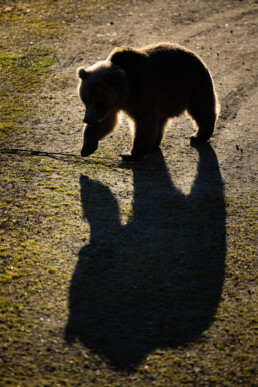
Even more common are bright, but muted backlight situations. Animals in front of an overcast sky, for example. Or retaining detail in the foreground of a bright sunset or sunrise. There are two strategies for these situations: high key or silhouette. Both can be effective.
In early July, I was leading the first of my Bears of Katmai workshops, which includes a day trip from Homer over to the coast of Lake Clark or Katmai National Parks. The day we made the trip, the Alaska Peninsula (where Katmai and Lake Clark are located) was heavily overcast, but across Cook Inlet the morning light was bright. There on the coast, facing east toward the bright sky, the bears we were photographing were heavily backlit.
I embraced both techniques, silhouette and high key, but in the end, favored the look of the high key photos. I metered and exposed for the bears, using exposure compensation to brighten the image even further. The result pushed the background to near white, losing any detail in the clouds or distant landscape. In this case, that was fine, I was most interested in the bears.
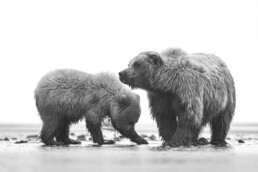
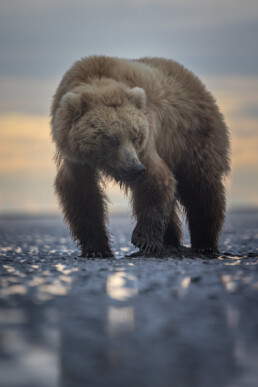
As the light shifted, moments of relative brightness came and went on my side of the inlet, and the bears would brighten up when compared to the background. Those moments allowed me to integrate the backdrop into the composition (as in the second photo, above).
The lesson? Pay attention to changing conditions and use them.
Backlight is not bad light, though it does have a host of challenges, and sacrifices are often necessary to make the most of the image.
